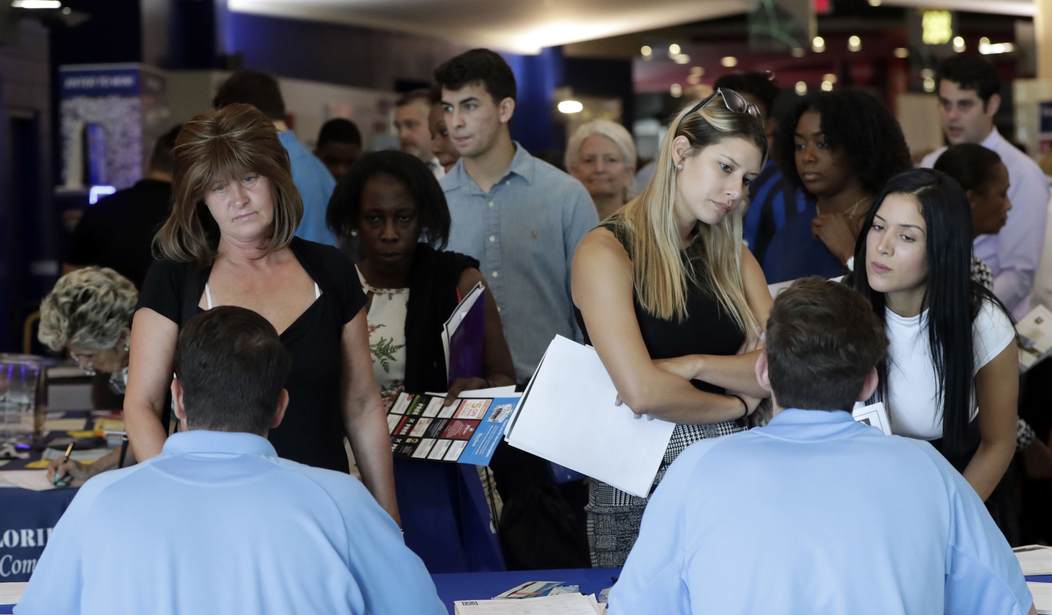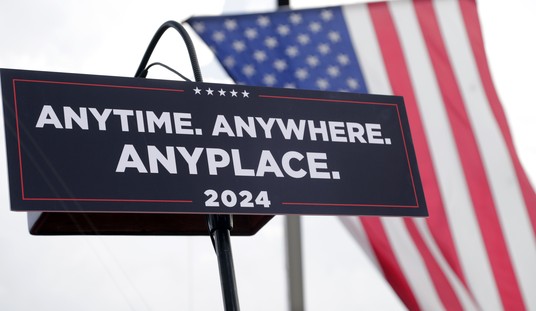It’s baaaa-aaaaack … and it’s bad. ADP took the summer off to retool its monthly National Employment Report, thanks to a consistently non-predictive result when compared to the official jobs reports from the Bureau of Labor Statistics. Its new report, now in partnership with the Stanford Digital Economy Lab, predicts that job growth in August will miss expectations — by a lot:
Companies sharply slowed the pace of hiring in August amid growing fears of an economic slowdown, according to payroll processing company ADP.
Private payrolls grew by just 132,000 for the month, a deceleration from the 270,000 gain in July, the firm said in its monthly payroll report.
The Dow Jones estimate for the ADP count was 300,000.
“Our data suggests a shift toward a more conservative pace of hiring, possibly as companies try to decipher the economy’s conflicting signals,” said ADP chief economist Nela Richardson. “We could be at an inflection point, from super-charged job gains to something more normal.”
Uhhh … 132K for a month is not exactly normal, at least not in a healthy economy. It’s at best a population-maintenance level of jobs growth in a month, not a sign of growth. The White House has argued for the last month that jobs growth shows that the US has not entered a recession. If the next month’s report on Friday shows that job expansion has dramatically decelerated, that argument won’t hold up.
If this report is accurate, it also means that we’re likely to come up far short of full recovery from the pandemic in that dynamic sense of population growth, a point I raise routinely now that Joe Biden and his team claim that equaling the employment numbers of February 2020 is the same as a full recovery. From last month’s job report review:
What about the pandemic recovery claim? Well, sorta. With this report and the revisions to the last two months (net +28,000), official non-farm employment in the US has reached 152.536 million. That’s finally above the pre-pandemic level of 152.504 million of February 2020. However, the US population has not remained static in that period. As I noted last month, we added nearly 4 million people to the population in 2020 and 2021, let alone what we’ve added this year. At an employment-population ratio of 59%, we would need to add about 2.4 million more new jobs to fully and dynamically recover from the pandemic crash. We should be at somewhere closer to 155 million non-farm jobs, in other words, so we are still recovering jobs — this time from the lost job creation of the last 30 months.
If this newly revamped ADP report is an accurate predictor, we will likely fall short of a full recovery. But is it? Note well their projection for July, emphasis mine:
Private employers created 132,000 jobs in August, a step down from the month before, when the economy created nearly 270,000 jobs. Payroll growth also slowed in July when compared to June of this year.
See the problem? ADP’s level of jobs growth in July came in at slightly over half of the BLS’ reported jobs in the same month (528K). If ADP intended to retool its reporting with Stanford to produce a more predictive model in alignment with the BLS’ official reports, their first foray into that effort doesn’t look like much of a success.
On the other hand, the trendline is still valuable … or at least it could be. If we take the ADP trendline as predictive and job growth got cut in half for August in comparison to July, we would still expect a BLS number on Friday to come in at around 260K, which would be a dramatic decrease in the pace of job expansion over the past year. It’s not bad, but it would definitely be a sudden and significant deceleration in jobs growth that would look even more significant in relation to two successive negative GDP reports.
And it may well be that the spectacular number in July was the result of a massive shift of demand from the future. The Wall Street Journal notes that a lot of job openings got filled in July that may have been hanging around a while, and that may impact hiring in August:
U.S. job openings rose in July as employers scooped up workers in a tight labor market.
The Labor Department on Tuesday said there were a seasonally adjusted 11.2 million job openings in July, up from the previous month’s upwardly revised 11 million. Job openings have remained elevated and above 10 million since the summer of 2021.
The number of times workers quit their jobs edged down to 4.2 million in July from the prior month’s 4.3 million. Layoffs and discharges fell slightly to 1.4 million in July from the prior month’s level. Hiring slowed slightly to 6.4 million, down from 6.5 million in June.
The jobs market remains strong, but some signs have pointed to slowing momentum as the Federal Reserve raises interest rates to tamp down inflation running near a four-decade high. The average pace of job growth in the first half of the year was slower than in all of 2021, and new applications for unemployment benefits have hovered near the highest point of the year in recent weeks.
Friday’s BLS report will clear up a few of these questions, not the least of which is how seriously we can take ADP’s projections in the future. At this point, nothing would surprise me about Friday’s report, so stay tuned — and keep your talking-point powder dry.








Join the conversation as a VIP Member